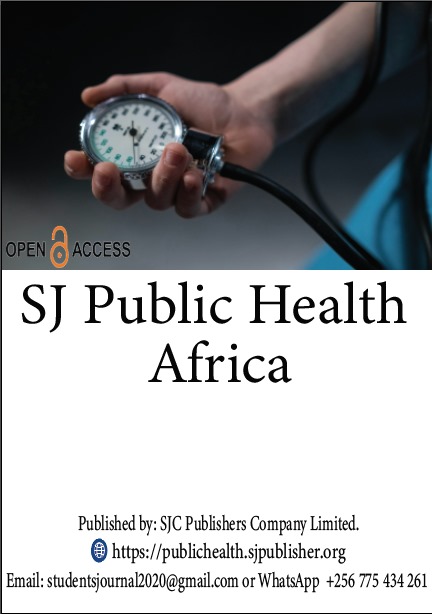INDIVIDUAL FACTORS ASSOCIATED WITH THE OCCURRENCE OF TYPHOID FEVER AMONG ADULTS ATTENDING BAY REGIONAL HOSPITAL IN BAIDOA DISTRICT, SOMALIA. A CROSS-SECTIONAL STUDY.
DOI:
https://doi.org/10.51168/ejqrv925Keywords:
Individual Factors, Typhoid Fever, Bay Regional Hospital, Baidoa District, SomaliaAbstract
Aim.
The study aims to determine the individual factors associated with the occurrence of Typhoid Fever among adults attending Bay Regional Hospital in Baidoa district, Somalia.
Methods.
A cross-sectional design was used in this study as it is the most relevant design when assessing the prevalence of diseases and it is particularly useful in informing the planning and allocation of health resources.
Results.
The results obtained indicated that the occurrence of typhoid fever was about twice more likely to be experienced by males (corrected odds ratio, COR = 2.2551, 80% CI = 0.5820, 8.7373) who are aged 19-30 years (COR = 2.0660, 80% CI = 0.5868, 7.2734) than females. Families with a household size of 7-9 people were about 3.5 times more likely to have typhoid (COR = 3.7522, 80% CI = 1.8104, 7.7771) and this was significant (P = 0.020). Unlike initially hypothesized, depending on donation (COR = 0.5660, 80% CI = 0.3120, 1.0267), the household’s monthly income (COR = 0.6980, 80% CI = 0.2719, 1.7922) and having no toilet (COR = 0.7790, 80% CI = 0.1370, 2.8138) had no independent associations with the occurrence of typhoid fever.
Conclusion.
The occurrence of typhoid fever was independently associated with males aged 19-30 years, families with household size of 7-9 people, not washing hands, and absence of clean water and sanitation facilities presented twice the risk of contracting typhoid fever.
Recommendation.
This study recommends that maintaining a lower household size and effective implementation of government policies on typhoid prevention could be effective strategies for the prevention of typhoid fever among adults attending the Medical Outpatient Unit at Bay Regional Hospital.
Downloads
Published
Issue
Section
License
Copyright (c) 2024 SJ Public Health Africa

This work is licensed under a Creative Commons Attribution-NonCommercial-NoDerivatives 4.0 International License.
The journal publishes under the Attribution-Noncommercial-NoDerivatives 4.0 international (CCBY-NC-ND 4.0) license which allows you to Share, Copy and redistribute the materials in any medium or format. The licensor cannot revoke these freedoms as long as you follow the license terms;
- Attribution: You must give appropriate credit, provide a link to the license, and indicate if changes were made. You may do so in any reasonable manner, but not in any way that suggests the licensor endorses you or your use.
- Non-commercial: You may not use the material for commercial purposes. Commercial use is one primarily intended for commercial advantage or monetary compensation.
- No Derivatives: if you remix, transform, or build upon the material, you may not distribute the modified material.
- No additional restrictions: You may not apply legal terms or technological measures that legally restrict others from doing anything the license permits.




